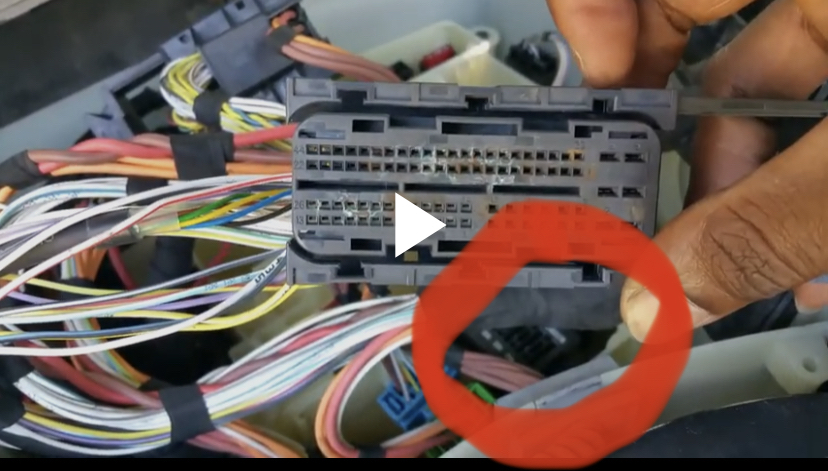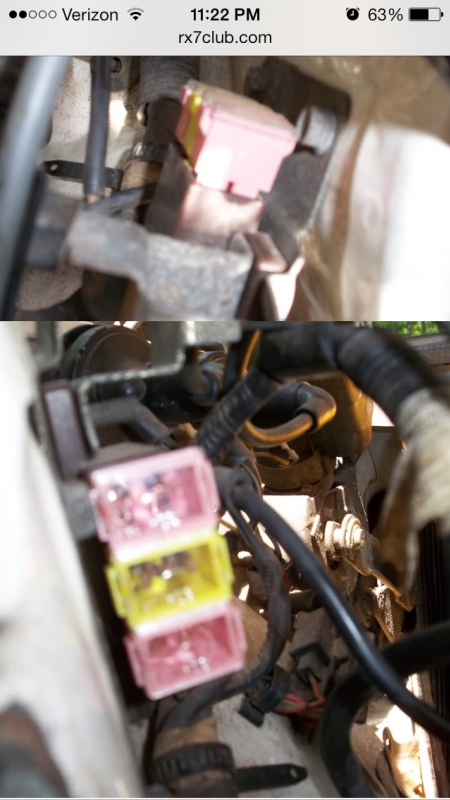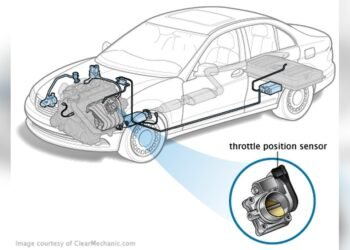No power to the dash or ignition typically indicates an electrical issue. Check fuses, wiring, and battery connections first.
Experiencing no power to your dashboard or ignition can be perplexing and halt your travel plans. This common automotive problem often stems from a malfunction in the vehicle’s electrical system. Car owners might encounter this issue unexpectedly, leading to a silent engine and inactive dashboard lights.
Diagnosing the problem requires a systematic approach, beginning with the most accessible components like battery terminals, which should be clean and tight for optimal performance. A blown fuse is another culprit that can disrupt the flow of electricity to crucial systems. Ensuring all fuses are intact and seated properly is a vital step. A more in-depth inspection might reveal issues with the ignition switch or wiring harnesses, which are pivotal in starting the engine and powering dashboard instruments. Regular maintenance and prompt attention to electrical irregularities can prevent such disruptions and keep your vehicle running smoothly.
Introduction To Dash And Ignition Power Issues
No power to the dash or ignition is a sign of car trouble. It means the dashboard lights or gauges do not turn on. The engine might not start. This issue can leave drivers puzzled. Quick diagnosis is key.
Common Symptoms
- Dashboard lights stay off
- Ignition key turns with no result
- Engine does not crank
- Car accessories fail to work
- Radio or headlights remain off
Potential Consequences
Ignoring dash and ignition issues can lead to worse problems. A car might stop while driving. This can be dangerous. It can also lead to costly repairs. Battery drain and electrical damage are possible.
Initial Inspection
When your car shows no power to dash or ignition, don’t worry. Start with an initial inspection. This step is crucial. It helps find the problem fast.
Safety First
- Turn off the car. This is very important.
- Wear safety gloves and glasses. Protect your hands and eyes.
- Make sure the car is on flat ground. It keeps the car stable.
Visual Check
Next, do a visual check. Look for simple issues that you can see.
- Check the battery. A dead battery is a common issue.
- Inspect wires and connections. Loose ones cause trouble.
- Look at the fuses. A blown fuse might be the culprit.
A visual check often reveals the problem. No need for fancy tools.
Remember, a careful start leads to a quick fix. Take your time with each step. Your car will thank you.
Battery Health Check
Is your car silent when you turn the key? No lights on the dash? It might be a battery issue. A ‘Battery Health Check’ is crucial. It helps pinpoint the problem. Let’s dive into how to test your car’s battery.
Testing The Battery
Car batteries require regular checks. A multimeter is your go-to tool. It measures voltage. A healthy battery should read around 12.6 volts. If it’s below 12.4 volts, charge it. Still low after charging? Replace it.
Understanding Voltage Readings
Voltage readings tell a story. Above 12.6 volts? Your battery is fully charged. Between 12.4 and 12.6 volts? It’s healthy but not full. Below 12.4 volts means it’s time to charge. Persistently low? The battery might be dying.
Follow these steps to test your battery:
- Turn off your car.
- Set your multimeter to DC voltage.
- Connect the red lead to the positive terminal.
- Connect the black lead to the negative terminal.
- Read the multimeter display.
Remember, safety first. Always wear protective gear. Keep sparks and flames away. Ready for a full battery health check? Grab your tools and get started!

Credit: www.carparts.com
Examining The Fuse Box
Imagine turning the key, but nothing lights up on the dash. This could mean a trip to the fuse box. The fuse box may hold the answer to restoring power to the dash and ignition. Let’s open up the fuse box and solve the mystery.
Locating The Fuse Box
Fuse boxes are usually under the dashboard, near the steering wheel. Sometimes they hide in the engine compartment. Look for a plastic cover labeled “Fuses”. Your vehicle manual shows the exact location.
Identifying Blown Fuses
A blown fuse cuts the power to prevent damage. Here’s how to spot one:
- Remove the fuse box cover.
- Look for fuses with broken wires or cloudy insides.
- Check the color and number. They indicate amperage.
A multimeter can also test for a blown fuse. Touch the multimeter probes to the fuse’s metal ends. A working fuse shows continuity. No reading means it’s time for a replacement.
Note: Always replace fuses with the same amperage rating. Using a higher amperage can cause serious damage.
Ignition Switch Troubleshooting
Having no power to your dash or ignition can be a headache. It often points to problems with the ignition switch. Let’s dive into troubleshooting this critical component.
Symptoms Of A Faulty Switch
- Car won’t start
- Dashboard lights flicker or don’t turn on
- Key turns but engine doesn’t crank
- Stalling during driving
Recognizing these signs early can save you from bigger car troubles.
Diy Inspection Tips
Follow these steps to check your ignition switch:
- Turn off your car completely.
- Locate the ignition switch. It’s near the steering wheel.
- Remove any covering to see the switch.
- Check for loose connections or damage.
- Use a test light to check for power. No light means no power.
These tips can help you find common ignition switch issues.
Wiring And Connections
Facing no power to dash or ignition can be a puzzle. One key area to check is the ‘Wiring and Connections’. Poor wiring often leads to power issues. Let’s dive into common wiring problems and how to fix them.
Checking For Loose Wires
Loose wires disrupt the flow of electricity. Follow these steps to check for loose connections:
- Turn off the vehicle.
- Locate the main harness.
- Inspect each wire for snugness.
- Test each connection with a multimeter.
- Secure any loose wires.
Corrosion And Its Impact
Corrosion on terminals can block power. Look for these signs:
| Sign | Impact |
|---|---|
| White or green residue | Bad connection |
| Rusty terminals | Potential power loss |
To fix corrosion:
- Remove the battery cables.
- Clean with a wire brush.
- Apply anti-corrosion gel.
- Reconnect firmly.
Grounding Issues
When your dash or ignition lacks power, grounding issues often play a role. Grounding connects electrical circuits to the earth, ensuring safety and functionality. A bad ground can disrupt the entire system, leading to power failure in critical areas like the dashboard and ignition.
Importance Of Grounding
Grounding is vital for any electrical system. It prevents shocks, short circuits, and electrical fires. In vehicles, it ensures the dash and ignition operate correctly. A solid ground connection allows for the safe passage of excess electricity back to the earth, reducing the risk of damage to sensitive electronic components.
Spotting Bad Grounds
Identifying a bad ground is crucial for vehicle maintenance. Signs include dim lights, erratic gauges, and a non-starting engine. Corrosion or loose connections at grounding points can cause these issues. Inspect the ground strap, a thick cable connecting the engine to the chassis. Look for breaks, wear, and tightness of the connection.
- Inspect ground straps and cables.
- Check for corrosion or loose connections.
- Ensure no breaks or wear on cables.
Use a multimeter to test the ground’s integrity. A high resistance reading indicates a problem. The ideal reading should be close to zero ohms, confirming a good ground.
| Test | Expected Result | Sign of Bad Ground |
|---|---|---|
| Visual Inspection | Intact cables, no corrosion | Corrosion, breaks in cables |
| Multimeter Test | Low resistance (near 0 ohms) | High resistance reading |
After spotting a bad ground, repairing it is the next step. Clean all contact points and connections. Replace any damaged cables or straps. Ensure all connections are tight and secure. A well-grounded vehicle will have a functional dash and ignition, leading to a safer and more reliable driving experience.
Quick Fixes
Experiencing no power to your dash or ignition can be stressful. Yet, some quick fixes might help. These steps are easy to follow and could save you time and stress. Let’s explore some temporary solutions you can try right away. Remember, if these don’t work, it might be time to call a professional.
Temporary Solutions
- Check the battery: Ensure it’s fully charged and connected.
- Inspect fuses: Look for any blown fuses and replace them.
- Examine wiring: Search for loose or corroded wires and fix them.
- Try a reset: Disconnect the battery for a few minutes, then reconnect.
When To Call A Professional
If the above steps don’t work, seek expert help. Professionals can diagnose and fix complex issues. Signs you need a pro include:
| Sign | Action Needed |
|---|---|
| Persistent electrical issues | Professional diagnostic |
| Smoke or burning smell | Immediate expert attention |
| Complex system faults | Advanced troubleshooting |
Preventative Maintenance
Car troubles can surprise even the most diligent owners. ‘No power to dash or ignition’ is a common issue. Preventative maintenance is key to avoiding this problem. It keeps vehicles running smoothly and reliably.
Regular Checks
Regular checks ensure early detection of potential issues. They prevent sudden car failures. A routine can save time and money. It can also extend a vehicle’s life.
- Battery: Test it every month. Check for corrosion. Ensure terminals are tight.
- Fuses: Inspect them regularly. Look for signs of wear or damage.
- Wiring: Check for frayed wires or loose connections. These can disrupt power.
- Ignition switch: Test its function. It should turn smoothly without resistance.
Long-term Care Tips
Long-term care is about being proactive. It’s about keeping your vehicle healthy over the years.
| Component | Care Tip |
|---|---|
| Battery | Replace it every 3-5 years. |
| Belts and Hoses | Check annually. Replace as needed. |
| Ignition System | Have a professional inspect it every year. |
Keep a detailed log of maintenance activities. This helps track the vehicle’s health. It also aids in diagnosing issues quickly.
Use quality parts and fluids. This protects against wear and tear. It also enhances performance.
Follow the manufacturer’s maintenance schedule. This is found in the owner’s manual. It guides on when to service key components.

Credit: 5series.net

Credit: www.rx7club.com
Frequently Asked Questions
Why Won’t My Car’s Dashboard Light Up?
A blown fuse or faulty ignition switch could prevent your dashboard from lighting up. Check these components for issues.
Can A Dead Battery Cause Dash Failure?
Yes, a dead or weak battery may result in no power to the dash or ignition, as it’s crucial for electrical systems.
How Do I Troubleshoot Ignition Problems?
Start by inspecting the battery, fuses, and wiring connections. A professional diagnosis may be necessary for complex issues.
What Signs Indicate A Failing Ignition Switch?
Key indicators include intermittent starting problems, stalling, and no response from the dash when turning the key.
Can A Faulty Alternator Affect Dash Power?
Certainly, a malfunctioning alternator can lead to power loss in the dashboard, as it fails to charge the battery adequately.
Conclusion
Navigating through issues with your vehicle’s power system can be daunting. Yet, understanding the common causes behind a lack of power to the dash or ignition is the first step. Regular maintenance and prompt attention to warning signs can prevent such problems.
Remember, keeping your car in top shape ensures a smoother ride and fewer surprises on the road.
















